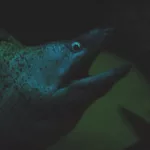Exciting space news has been announced by scientists in Australia, revealing a groundbreaking discovery in the universe. They’ve found what is now known as the fastest-growing black hole ever seen by humans. Imagine a space so powerful, where everything is pulled towards its center so strongly that even light cannot escape!
This extraordinary black hole is like a cosmic vacuum, sucking in the equivalent of one sun every single day. It’s located in the heart of a very special and bright galaxy called a quasar. This quasar, named J0529-4351, stands out because its center is incredibly active and shines brilliantly due to the material falling into the black hole and breaking apart. This process releases so much light that scientists think it might be the brightest object in the entire universe.
The discovery was made by a team led by Australians, who used the Very Large Telescope in Chile to observe this quasar. The light it emits is unbelievably bright, about five hundred trillion times more than our sun.
Christopher Onken, an astronomer at the Australian National University, expressed his surprise that this quasar remained unnoticed until now, especially since it’s so bright and has been visible since 1980. Back then, it was mistaken for a nearby star because it appeared as just a tiny dot in the sky.
After further study, astronomers realized their initial thoughts were incorrect. This quasar is not close at all; in fact, its light has taken over 12 billion years to reach Earth, indicating it’s located at an incredible distance from us.














wow so cool
wow this is amazing